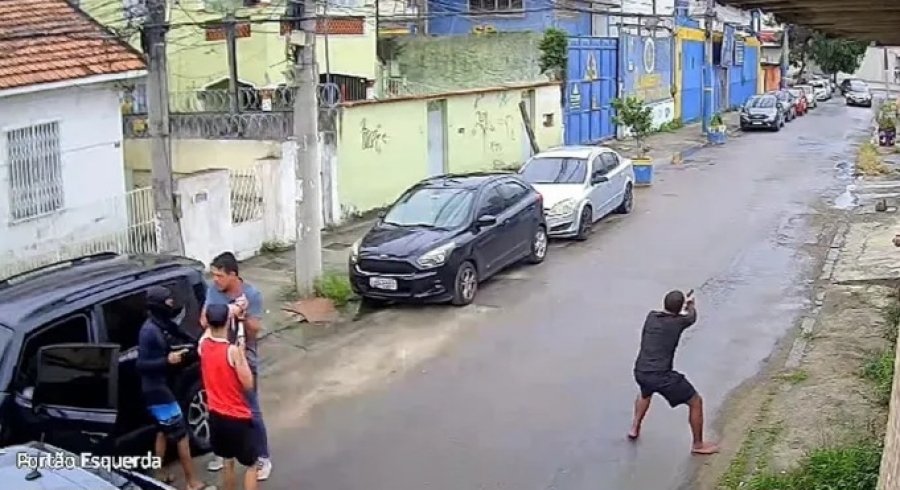The advance of drug trafficking through Rio’s neighborhoods, in addition to violent clashes, leaves a trail of vehicle robbery. Data from the Crime Map shows that attacks on drivers have accelerated most sharply in areas facing gang expansion or territorial disputes, driving a 40.3% increase in this crime across the city in 2024 compared to the previous year. This trend is evident in the area controlled by the Third Pure Command (TCP) in the Israel Complex, in the North Zone. The same occurred in Baixada de Jacarepaguá, where Red Command (CV) took over 20 favelas from militias using cloned cars in invasions and targeted killings. The Chapadão Complex, in the suburbs, follows a similar pattern: traffickers rent out weapons to robbers and profit from a car recovery racket.
This Content Is Only For Subscribers
To unlock this content, subscribe to INTERLIRA Reports.
Increase in the State
Each criminal faction has its method of exploiting this lucrative and fear-inducing enterprise. As a result, among all crime categories tracked by the Crime Map, vehicle robbery saw the largest increase in 2024. The city of Rio heavily influenced the state’s figures, with the state of Rio recording a 39% rise compared to 2023, according to the Public Security Institute (ISP). This was the second-highest increase in Brazil, behind only Tocantins (44%), according to a report from the Ministry of Justice, which recorded a 6.1% national decrease in this crime.
City of Rio
In the capital, 106 out of 147 neighborhoods (72%) registered a rise in vehicle robbery, including Rio Comprido (251.8%), Botafogo (124.6%), and Tijuca (120.5%). Most of the areas with rising figures are not only under drug trafficking control but also show a growing influence of organized crime networks.
Israel Complex
Recent shootings that shut down expressways, paralyzed the city, and killed innocent civilians highlight the transformation of the Israel Complex into a fortified stronghold. The area is dominated by Álvaro Malaquias Santa Rosa, known as Peixão, a TCP leader who claims to be an evangelical. In 2024, the gang expanded operations, erecting barricades in new territories. Vehicle thefts soared in the five surrounding neighborhoods. In Parada de Lucas, Peixão’s main base, incidents more than doubled—from 102 in 2023 to 231 in 2024 (up 126.5%). In Vigário Geral, a former CV stronghold now controlled by Peixão, thefts rose from 98 to 221 (up 125.5%).
Jardim America
Located on the border between Peixão’s turf and areas dominated by the CV, Jardim América saw a 92.1% increase in vehicle thefts. Major thoroughfares like Avenida Brasil and Linha Vermelha, along with access roads to the Presidente Dutra and Washington Luiz highways (BR-040), cross or border these zones.
Red Command
In areas surrounding the Alemão and Penha complexes—strongholds of the CV—drug trafficking and car robbery rose in tandem. In five adjacent neighborhoods, thieves claimed more victims, especially in Penha, where cases increased 125.7%, from 101 to 228.
Chapadão Complex
The Chapadão Complex area in the North Zone registered the highest number of car thefts in the city. In Pavuna, which contains part of the complex, reported cases rose 50.6% in 2024, reaching 637 incidents—the second-highest count citywide. Irajá, its neighbor and under Chapadão’s influence, topped the list with 766 cases, a 68% increase. Guadalupe, home to the Gogó da Ema favela, ranked ninth, with 297 car thefts, up 26.4% from the year before.
Jacarepaguá
In Baixada de Jacarepaguá, the CV’s expansion has been marked by growing vehicle robbery. In 2024, the faction took over 20 favelas from militia control, and 14 of the 18 neighborhoods in the region surveyed by the Crime Map saw increases in car robbery. From Praça Seca (11.8% increase) to Vargem Grande (84.6%), including Gardênia Azul (66.7%) and Recreio dos Bandeirantes (40.3%), all areas with trafficker incursions experienced a surge in cases.
Analysis:
The data points to a direct correlation between the territorial expansion of drug trafficking factions and the rise in vehicle robbery across Rio de Janeiro. Criminal organizations have increasingly integrated vehicle robbery into their operational strategies—not just as a source of revenue, but as a logistical tool to facilitate invasions, attacks, and territorial control. The use of cloned or stolen vehicles in armed conflicts, as seen in Jacarepaguá and the Israel Complex, reflects this functional integration of robberies into broader criminal agendas.
The spatial concentration of these crimes in neighborhoods adjacent to gang-dominated favelas suggests that the state’s inability to reestablish governance in these zones is fueling the problem. Areas like Irajá, Pavuna, and Penha have seen staggering increases, indicating a collapse of deterrent capacity in regions where traffickers impose parallel rule. Moreover, criminal enterprises have become more structured and sophisticated, engaging in illicit car recovery schemes and arms rentals, which further entrench their local influence.
Sources: O Globo.




